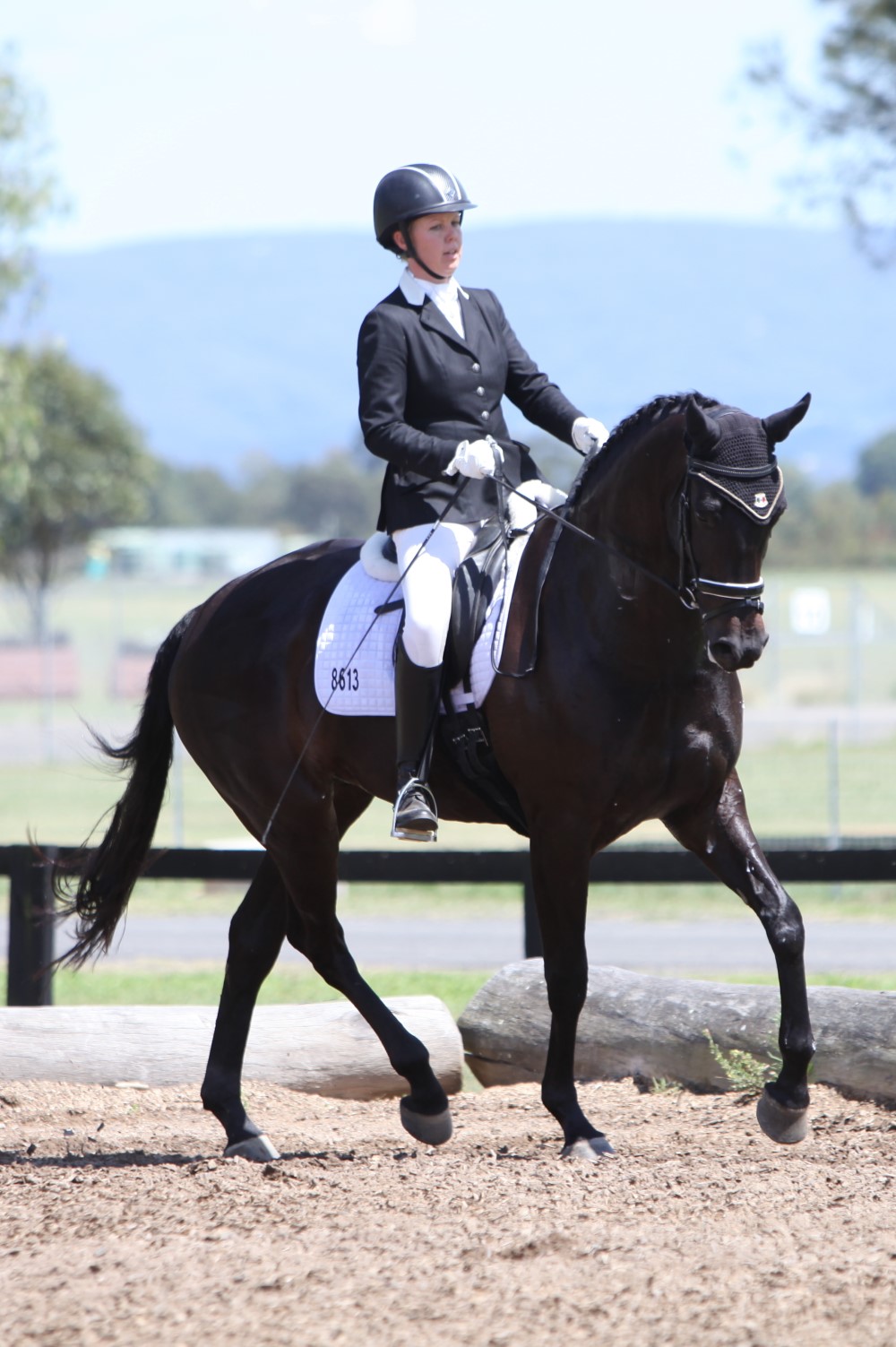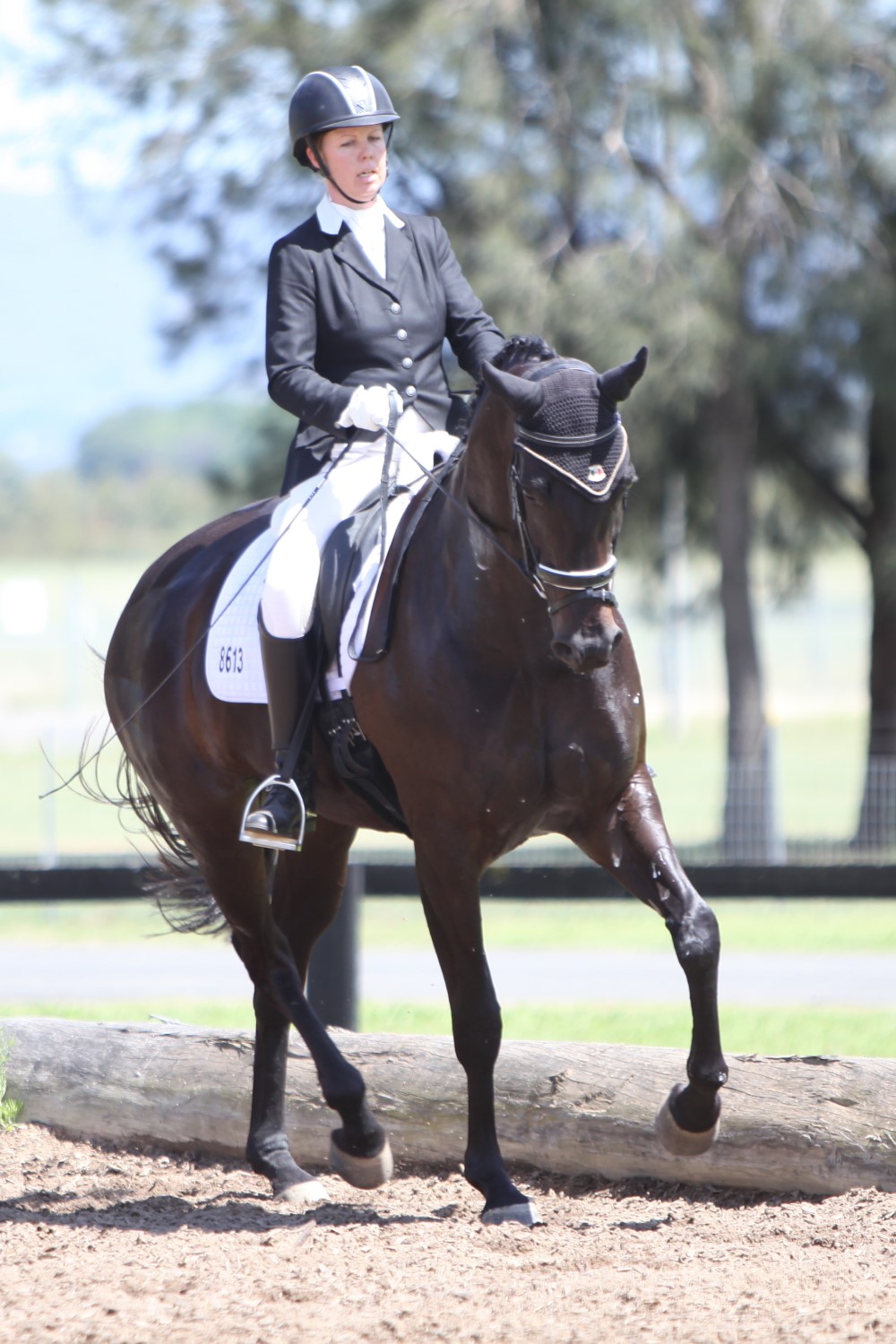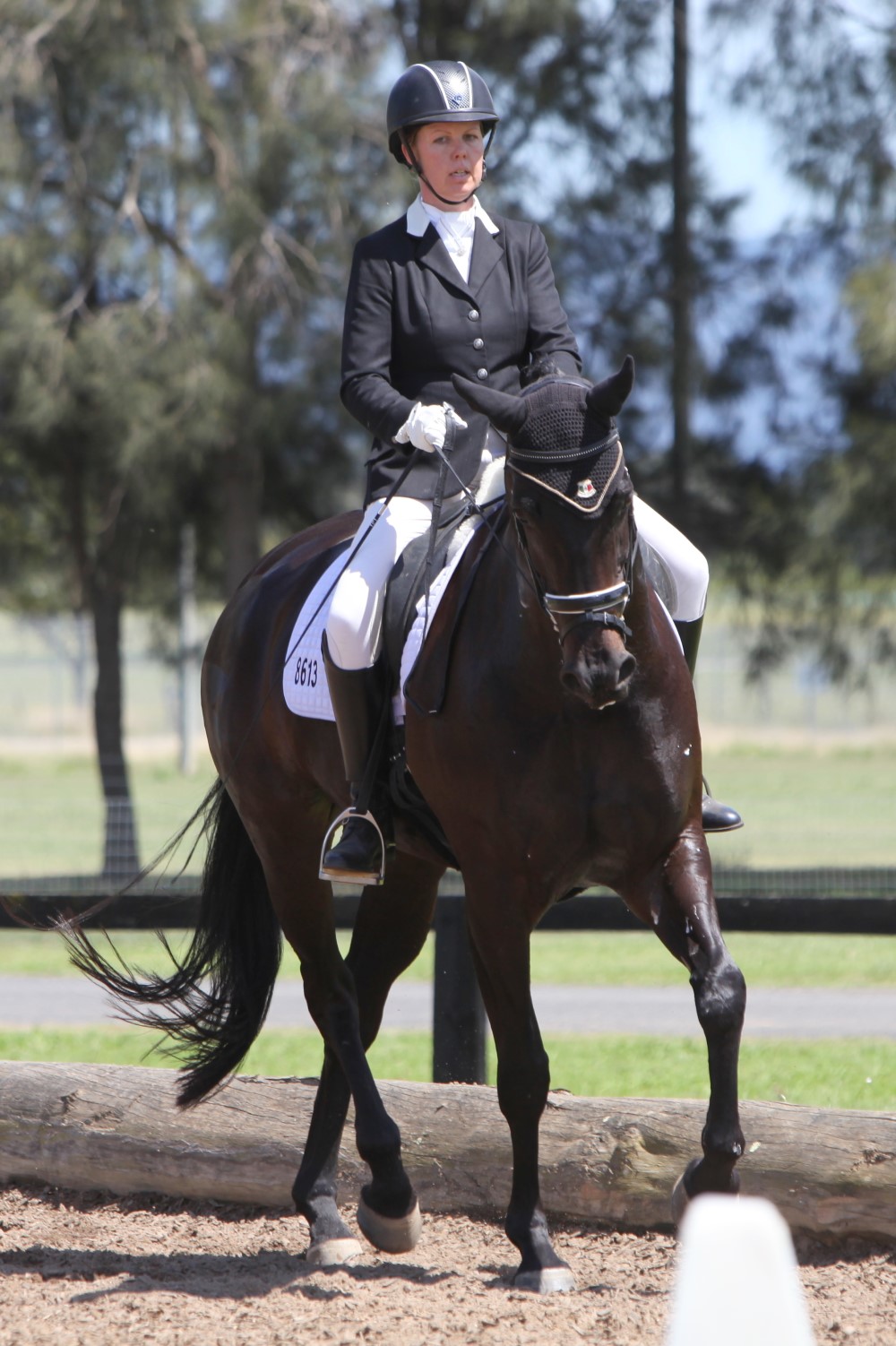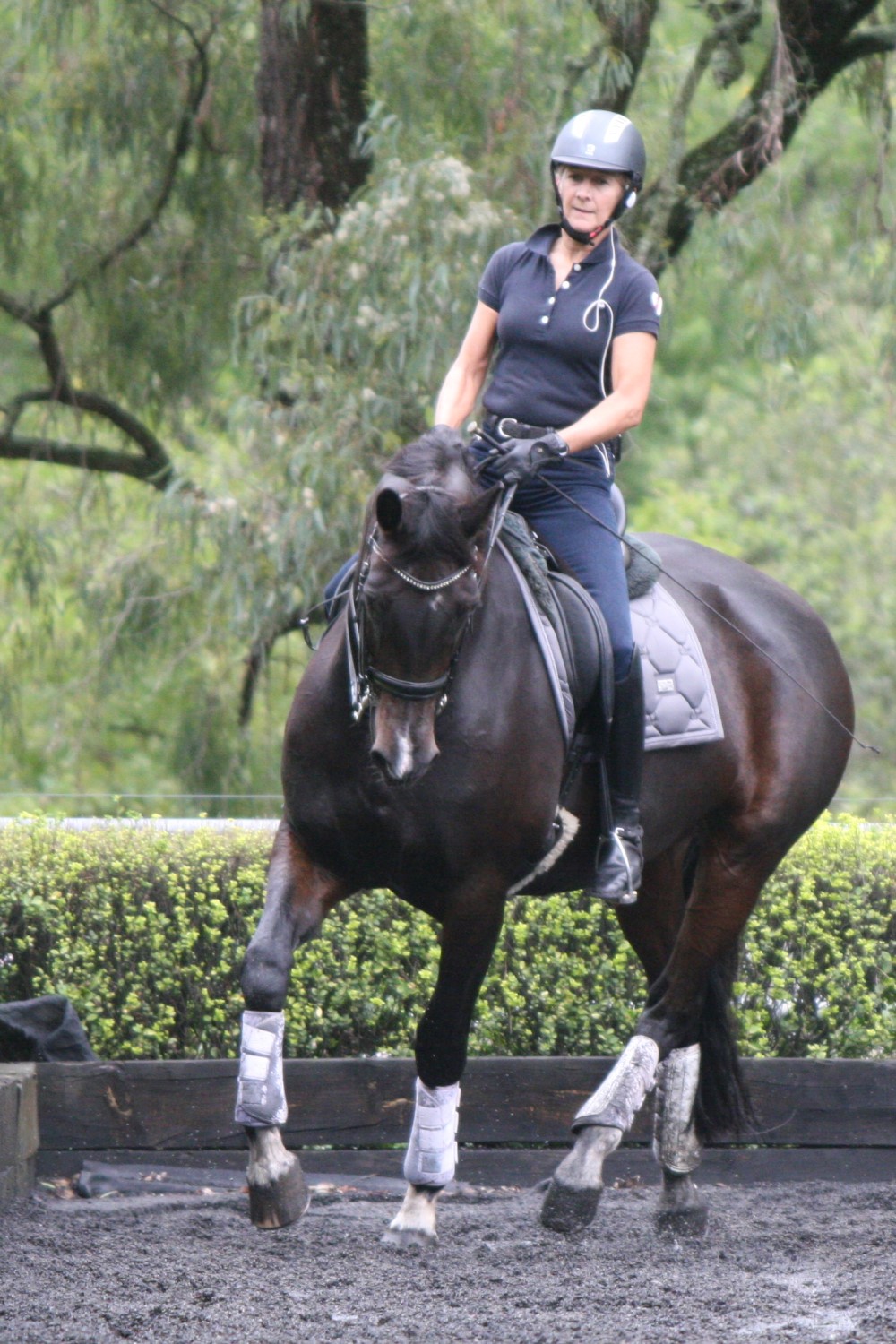Seamless harmony with your horse is communicated through clearly understood cues that instinctively prepare the horse for what is expected of it. This preparation is what builds confidence, empathy and trust between rider and horse.
Every dressage horse is basically trained by cues that alert him or her to what is to be expected within the next few strides. These cues are called preparation, and they are cued though the aids of the rider. The aids being direction to the horse through the reins (hands), the horse’s sides (rider’s legs) and their hearing (verbal). You may think of it as putting your horse in the mood for the movement that is coming up.

This preparation is all-important for fluency and confidence so that there are no surprises and the horse is always trusting of what is about to be expected of him. When these cues are understood – by continuity and repetition of the same specific prompt always leading to that prompted exercise – the horse becomes familiar and confident with a specific signal leading to the same outcome.
Of course, the cues always need to be made very clear by the rider. This preparation indicates what is coming and must always be adhered to in the training of any horse towards Grand Prix, and it shouldn’t change. X leads to Y, A leads to B and so on, and never does A lead to X or any other outcome despite sometimes the preparations being similar. The preparatory signals are their own separate entity; such as the canter aid and travers are very similar but different!
Every dressage test must show seamless tempos within the paces and transitions and fluency from one movement to another that exude confidence, expression and ease. This harmony between horse and rider is what gains the highest of marks, and to enable this to be shown, there needs to be this imperceptible feeling that is intuitive between the horse and the rider. Preparation! There is never a question of what is coming up.
Imagine if you were blindfolded and told you were about to be fed a piece of orange and you were able to smell it – you are prepared to eat an orange and open your mouth, but you were given salted peanuts instead! What a shock would that be! If you were tricked into that several times you would be nervous and not want to open your mouth for food. Well, so it is with a horse that believes he is being prepared for extended canter on the diagonal and, all of a sudden, it’s a pirouette. It won’t be long before your horse gets sick of the wrong cue and will give up!
When you watch the great riders training you can tell what movement they are about to ride as they come out of any corner… shoulder-in, straight on, half-pass on the diagonal, extended trot straight on, or perhaps the diagonal, a transition to piaffe or passage, or maybe a stretching, relaxed frame. All these movements are a possibility, but what enables us to see what they are about to do? It’s an attitude and expression that the horse adopts as the rider has cued or put the horse in the balance and mood for any of the movements mentioned. The horse doesn’t exit a corner bewildered as to where or what he has coming up, but due to the preparation in positioning and balancing he knows what is in store. He has confidence not to be tricked, so there is harmony and understanding. It’s oranges, not peanuts!
“The most important cue
of any is the half-halt.”

Of course, every riderhas a slight variance in the cue, and by training and watching the experts and seeing the best horses you learn to feel the cues that trigger the feeling for what is coming up. Looking at any movement, a cue or preparation can be explained and recognised.
The most important cue of any is the half-halt. Not only is it an aid that rebalances the horse at any moment, at any pace and at any speed, to help perform a movement in a better way, but it is also a cue to “get ready”. This half-halt draws attention to get ready and listen for a preparatory aid (READY). Next is the rider’s positioning of the leg aid, rein aid and weight etc (SET). When the preparation gives the rider that feeling that the horse is in the mood, then it’s GO!
When this preparation is repeated in the same way, there are no surprises and the horse develops supreme confidence in what is about to happen. Do you want some orange? (half-halt) Ready – smell the orange (aids in position) Set – eat the orange, Go! No surprises, and the mind learns really quickly that the smell of orange leads to eating an orange. Get the picture? So, as the smell of orange is part of the mood setting, so are the aids in the preparation.
Take this example: The horse is in collected trot around the corner on the right rein.

“It would be interesting
to hear from the horse…”
Choices:
• Continue straight on in collected trot
• Leg-yield right
• Shoulder-in right
• Travers right
• Half-pass right
• Extended trot on the diagonal
• Canter straight on
• Halt
Now, before reading on, go back and think of your preparation for your horse for each of those eight movements and think what do you do to put your horse in the mood for each one. It is interesting to also imagine that your horse can talk. You being the horse, ask what do you feel that tells you which of the eight movements you are about to do. It would be interesting to hear their reply. What do you do to let your horse know the correct decision and to follow your decision as to what movement he may do?
It would be interesting to hear from the horse’s feeling of what the preparation for those eight movements felt like: Was it leg or hand or seat or voice? And in what positions were the legs and which pressures were strong and weak and so on?
Here are some preparation examples…
Out of the corner in collected trot on the left rein, round and on the bit, (1) half-halt, (2) flex the horse a little left, (3) put the left leg a little in to the girth and feel the outside rein to control the shoulders. That’s the “READY, SET”; then, as you continue as if you are going to come on a small circle, a little inside leg and a steady ever-so-slightly opening outside rein (GO) to ask for shoulder-in.



Before exiting the corner (on the left rein) maybe two or three strides, early half-halt and then (1) immediately increase a little inside leg and increase the bend and flexion, (2) the stride before exiting the corner right leg back, (3) another half-halt and then a little more pressure with the outside leg… what’s the movement? (GO) – travers.
The stride before the exit, half-halt and increase the inside leg pressure to expand the bending and engage the inside hind leg and keep the horse’s weight to the outside. Coming on to the long side, maintain the bending and then outside-leg behind the girth a little more pressure. (GO) – half-pass.
So, you may say, what’s the difference between the travers and the half-pass? It’s the timing of when you say “GO”. One is as you leave the corner and the other is after you leave the corner. It’s the fact that you can get your horse balanced and ready for the exercise and that he is aware of what is to come up. Of course, the most important thing of all is to realise you need to have the aids and controls available to show your horse a good balance that enables him to move in that direction and the exercise that you require. The half-halt is instrumental! Once you can show your horse the way to balance, he can then gain strength to carry himself alone.


Starting with simple exercises progressing through to the more complicated Grand Prix exercises with preparations that put the horse in the mood and the correct frame of mind for performing those exercises and the horse thinks, listens and then performs. If any of these three things are lacking, you will not achieve a good outcome and so the horse must have faith and confidence in you that you will help him to achieve and not fail. He must trust you and the aids and preparation. Of course, this is about the mind as well as the body and they go hand in hand. Every horse’s mind, attitude and ability is individual and so must be kept in the rider’s thoughts to achieve the best result from each individual horse. Friendly, but clear and positive, is of the utmost importance to keep your horse on your side.

“Friendly, but clear and
positive, is of the
utmost importance.”
Starting with simple exercises progressing through to the more complicated Grand Prix exercises with preparations that put the horse in the mood and the correct frame of mind for performing those exercises and the horse thinks, listens and then performs. If any of these three things are lacking, you will not achieve a good outcome and so the horse must have faith and confidence in you that you will help him to achieve and not fail. He must trust you and the aids and preparation. Of course, this is about the mind as well as the body and they go hand in hand. Every horse’s mind, attitude and ability is individual and so must be kept in the rider’s thoughts to achieve the best result from each individual horse. Friendly, but clear and positive, is of the utmost importance to keep your horse on your side.
The physical part of riding the exercises is often the easiest. More time should be spent focusing on the cues for preparation of exercises that lead to any of the Grand Prix movements. These preparations should always be made in the same way and sequence, and only when the feeling that the horse has cottoned on to what the exercise to come is about, should you say “GO!”
It’s a very good idea to think of these preparatory cues before you even get on your horse. Try to write down the preparation you would do for every exercise. If you are finding it hard to write and verbalise your preparations, then think how complicated they will be for your horse to understand. You must have clear feelings and understandings about the preparation for every exercise that you make in a dressage competition. To ride a good dressage test doesn’t only take physical skill but every rider must focus on the mental side of the training. Try to spend more time thinking and understanding the preparations for each and every movement, circle or line. If you do this and keep your mind active and alert to what you’re telling your horse to do, dressage will become a whole lot easier – systematic, logical, easier – and will create a more relaxed, confident and competent horse.
Be consistent, don’t change the way, have patience and understanding and, above all, enjoy training your horse with empathy and thought towards his understanding you in the preparations for the movements.
YOU MIGHT ALSO LIKE TO READ:
Chris Bartle’s Lessons in Simplicity – Equestrian Life, December 2023

